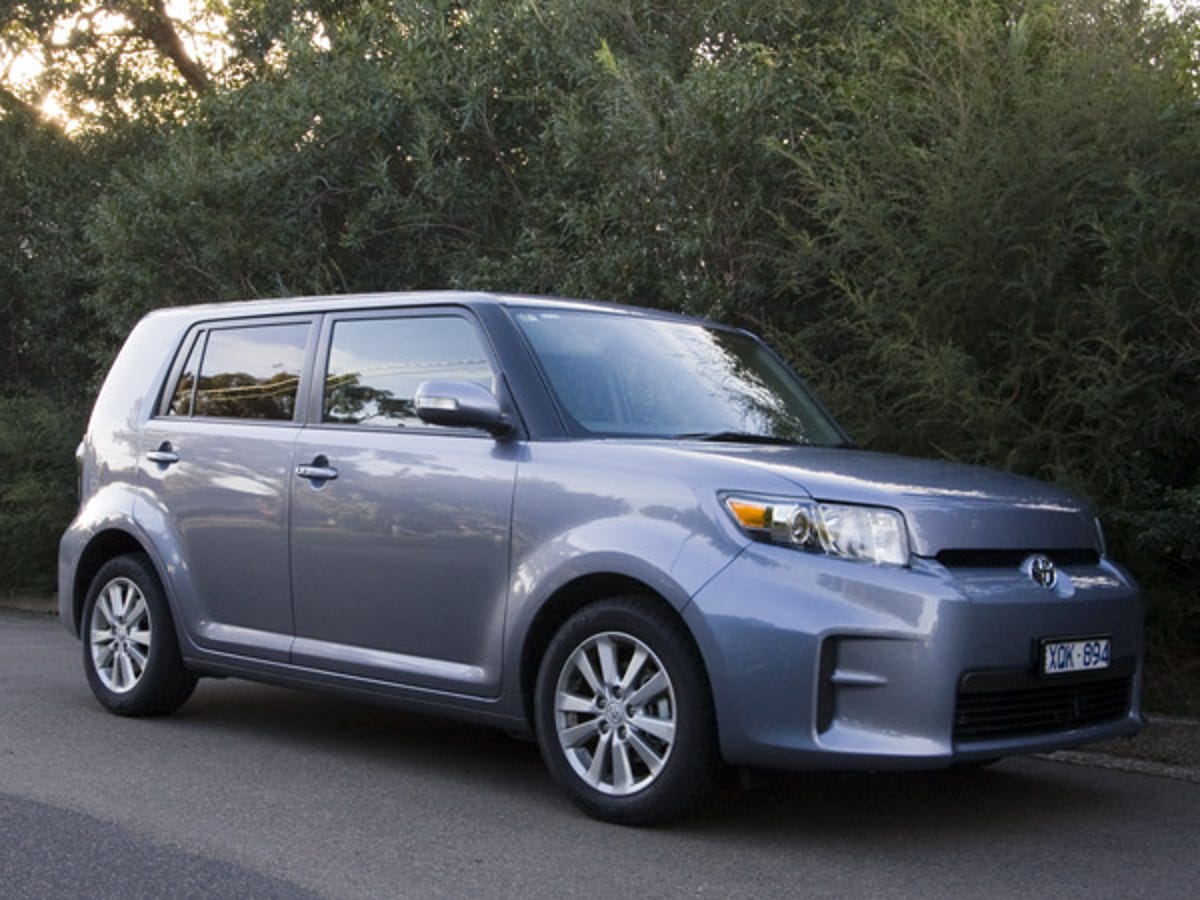Toyota Rukus in depth
Go past its polarising skin and there's plenty to like about the Rukus. We take an in-depth look and pick out the parts that endear, annoy and bemuse us the most.

Like it or loathe it?
Go past its polarising skin and there's plenty to like about the Rukus. We take an in-depth look and pick out the parts that endear, annoy and bemuse us the most.
For more information on features, pricing, technology, what it's like on the road and how it all comes together, read our full review of the Toyota Rukus Build 2.
Among colleagues and friends, only a small proportion liked the Rukus' looks. That's admittedly a small and narrow cross-section of the population. So let us know your thoughts in the comments section below.
Humble roots
Whether you like it or not, it's certainly more distinctive than the Corolla on which it's based.
Tall boy
The Rukus and Corolla are similarly sized, with the key difference being the Rukus' 10cm height advantage.
West coast
The boxy shape has gone down well on America's west coast where tuners have taken to it with crazy paint jobs, bumper-shatteringly low suspension and teeth-jarringly large alloy wheels.
Keep up with the McJoneses
Everyone loves LED indicators in the wing mirrors.
Old school
Long and flat, the bonnet is constantly in the driver's field of vision, which is unusual in a modern car.
Wrap it real good
The pillar between the windscreen and front is blacked out so that the glass looks like it wraps around the front.
Curio number one
It's odd that a car that's meant to appeal to young 'uns and tuners doesn't have LED tail-lights on the menu.
All boxed up
We like the Rukus' boxiness, but wonder if we'd like it even more if there were fewer curves and circular features.
Modnation
Customisers will no doubt want to junk the standard-fit 16-inch alloys at the first chance.
Curio number two
Projector headlights are standard, but xenons aren't on offer.
Cabin fever
The controls are generally well laid out and while soft-touch plastics aren't in evidence, the cabin feels well made.
Hide it
In addition to covered storage spaces, like the glovebox and centre console bin, the Rukus has a smattering of open-air hidey holes, like this one underneath the centre console bin. There's also a shelf above the glovebox, bins in the door trim and a key holder near the steering wheel.
It works!
We're not generally a fan of centrally mounted instruments, but the ones in the Rukus work well. That's because the digital speedo lies just below the windscreen base and a smidge above where our hands should be on the steering wheel.
Boot it
Sandwiched between the boot floor and the space saver spare tyre are a set of hidden compartments for storing stuff.
Tall boy, part II
The high roof allows for a higher seating position. Coupled with front seats that go well back, this permits tall folk to comfortably sit behind one another.
Deep purple
The dark purple fake wood trim doesn't exactly scream youth to us.
Close, but no cigar
The rear seats don't quite fold flat.
Load me up
Nonetheless there's plenty of vertical load space.
Orange army
The instruments and most of the controls have a gentle orange backlight.
Hold up
A card holder is located to the driver's right, around knee level. It really needs a light, though, because we often stubbed our newly minted car park ticket into random parts of the dash.
Informer
The in-dash display can show outside temperature, instant and average fuel economy, estimated range, average speed and the current time.
Keyless, part I
Inserting keys is so 1960, just press this button and go.
Is that a 2.4-litre engine in your bonnet?
Why, yes it is. Boasting 123kW of power and 224Nm of torque, the Rukus has plenty of oomph, even when loaded up with people and things.
Don't look down
The air-conditioning controls take a bit of getting used to.
Climate change
Build 2 and 3 models come with a single-zone climate control system.
Keyless, part II
You could press the plipper to unlock the doors, but if you've got the fob in your pocket, yanking the door handle is sufficient.
Cruisin'
Cruise control is present on both Build 2 and 3 models. Unfortunately, the dash light only tells you when the system is on, not when a speed is set.
Finger on the pulse
How did we ever live before steering wheel audio controls? It's a pity, then, that only the Mode button is lit at night.
Boom, boom, boom
A nine-speaker sound system is present in Build 2 and 3 models, with a subwoofer mounted in the Rukus' C-pillar.
Stereo, part I
All Rukeses have an auxiliary port, USB and Bluetooth. The 4.3-inch display for Build 2 and 3 models isn't a touchscreen unit, instead it's operated by the station preset buttons that flank it.
Stereo, part II
Track info isn't shown on the main iPod playback screen; you'll need to press the Text button for that.
Stereo, part III
Scrolling through long lists can take forever.
Stereo, part IV
Bluetooth hands-free and audio streaming is part of the package. Separate Bluetooth pairing lists are maintained for hands-free and audio streaming, and if you're an iPhone user we'd highly recommend using USB for music and Bluetooth for hands-free, otherwise strange and silent things may happen. Sound quality via Bluetooth audio is passable, but noticeably thinner than music piped in via USB or auxiliary cable.
Up to five Bluetooth phones can be registered; although audio is played primarily through the driver's speakers, the microphone is located on the stereo head unit allowing passengers to converse as well.
For more information on features, pricing, technology, what it's like on the road and how it all comes together, read our full review of the Toyota Rukus Build 2.

